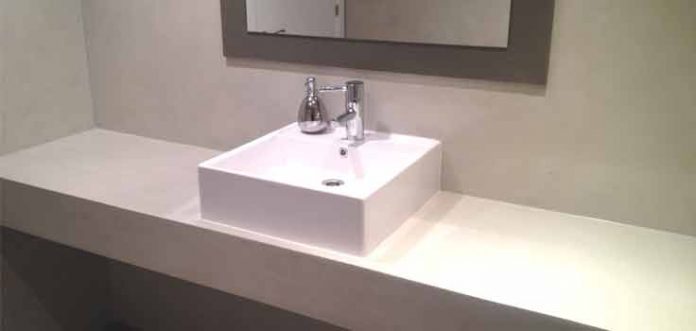
Microcement, a booming material in the construction and decoration sector.
Despite the advances that have been made in construction materials over the last few years, microcement is not yet as widespread as it will almost certainly be in a short space of time. Due to all the advantages it brings, it is increasingly gaining followers, including architects, decorators, builders and, of course, the end customer, the user.
Next we are going to talk in depth about this innovative material: Microcement.
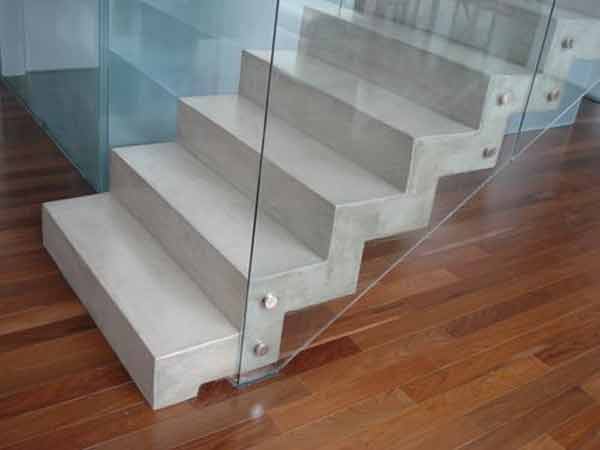
What is Microcement?
We will start by explaining what it is and how it works. It is a coating made up of a high-performance cementitious base, mixed with polymers, fibers, aerators, ultrafine aggregates, and accelerators. All this combined with colored pigments. One of the main qualities of microcement is its extraordinary adherence to practically all kinds of surfaces. It is ideal for covering surfaces, among others, of concrete, cement, tiles, plaster, plasterboard, metal, plastic, stoneware, marble, and a long etc.
The application of microcement ranges from floors to walls, living areas, swimming pools, bathrooms, kitchens, furniture, built-in shower plates, etc.
This material is used by decorators thanks to its great versatility, texture, finish, and ability to combine with a wide variety of materials, allowing very creative results to be achieved, as well as adjusting to the needs of each project.
On the other hand, it has the enormous advantage of being resistant to water and high temperatures.
It is useful both for new construction and to renovate floors, walls or home coverings.
The economic and time saving that microcement provides is very important to take into account, since it is not necessary to eliminate the existing material, which will serve as the base. Once mixed and kneaded, it is distributed on the surface, covering it until a screed of between 2 and 3 mm is obtained.
For this same reason, it is a quick, clean, practical solution with truly surprising results.
Characteristics of Microcement
Next we will talk about the main characteristics of this innovative type of coating.
- The 2 to 3mm thickness of this material allows it to be applied in spaces without the need to remove the existing surface.
- Its great versatility allows its application both in private homes, as well as in commercial premises, offices, industrial buildings, as well as in outdoor areas.
- The combination of different types of pigments allows the creation of thousands of colors.
- The heights and altimetries do not suffer alteration or variations.
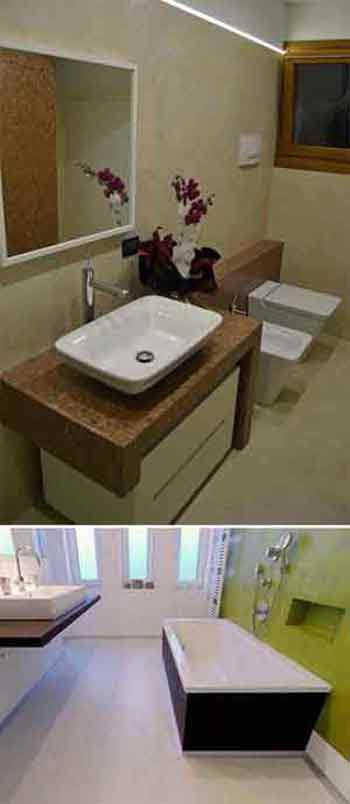
- Once this coating is installed, the increase in weight for the calculation of structures is marginal.
- It has a high mechanical resistance both in compression, as well as in bending and abrasion.
- It has a totally waterproof finish, which makes its installation optimal for humid areas.
- It allows you to combine materials and insert any type of graphics and decorative motifs.
- The term of execution of work is about 35m2/day. This is an approximation, since it will depend on the characteristics of the surface and the room to be covered.
- Microcement does not require expansion joints, so there is a continuous surface.
- It is stable against ultraviolet rays.
- It is non-slip.
- It can be applied on all kinds of surfaces, whether they are healthy or damaged. In the latter case, in the step of preparing and cleaning the surface, all loose parts and parts in poor condition should be removed.
Precisely this makes it ideal for coating new concrete surfaces, DM, glass, rehabilitation of old concrete floors, stoneware, tiles, plaster, plasterboard, metal, plastic, marble, etc.
- This material is optimal, both technically and aesthetically, for any environment, both indoors and outdoors.
- Microcement is highly resistant.
- It is long lasting.
- It admits rustic, artistic and highly original and eye-catching finishes.
- There is a wide variety of shades to choose from on the market. However, in addition to the basic colors, they can also be found “made to measure”.
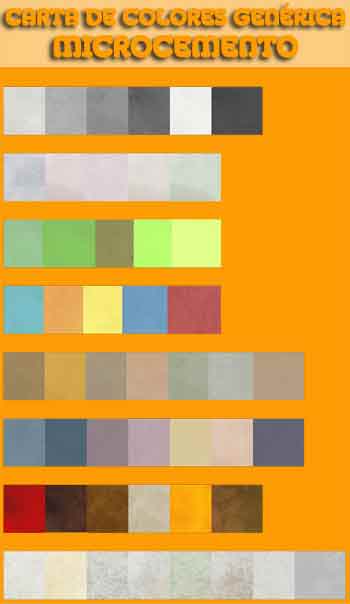
- The material is spread directly on the surface, without the need to render or remove the existing one.
- Thanks to the latter, the work is fast and clean, since it does not generate debris.
- Its cleaning and maintenance is very easy.
Microcement Applications
The application possibilities of this material are truly numerous, among which the following can be found.
- It is applied in new construction directly on the concrete or cement.
- It is applied on polished cement, renewing the surface in its entirety and closing the pore of the cement itself.
- It is applied on tiles and tiles without the need to remove the existing one.
- It is applied both on floors and on walls and ceilings, in living areas, dining rooms, bathrooms, kitchens.
- It is applied to plasterboard or plasterboard, both on ceilings and walls.
- It is applied on the resulting surfaces once the flooring, carpet or any existing coating has been removed.
- It is applied on shower trays and sink countertops.
- It is applied directly on DM (medium density fiber wood), such as cabinets or doors.
- It is applied on metal surfaces.
- It is applied on sidewalks or other high-traffic areas located outdoors.
- It is applied in swimming pools, spas and outdoor wet areas.
Microcement application method
Below we explain in a schematic way the way in which the application of the microcement should be carried out, to obtain an optimal result.
The complete application process consists of 5 phases.
1.- Cleaning and preparation of the surface to be covered.
The existing support must be strong enough and completely set, free of dust, paint, oil, etc., so that the microcement adheres correctly.
On a new cement base, it must be completely set, that is, 28 days must have elapsed since its application.
2.- Application of the first layer of microcement.
With the first layer, in the case of floors, it is recommended to place fiberglass mesh to prevent it from cracking later.
The optimum temperature for its application is between 5ºC and 35ºC.
As it is self-levelling, there is no need to level the surface to be covered. In this way it can be applied on deteriorated floors free of moisture and, as we have said before, dirt.
Between layer and layer, you have to sand or polish, eliminating irregularities if they exist.
3.- Application of the second layer.
Once the first one dries, a second layer is applied, but this time, of thick microcement in order to fill all the cracks and pores, smoothing the floor and the existing joints.
4.-Application of another two layers of fine microcement.
Next, two new layers of fine microcement are applied.
Between layer and layer it is necessary to let the previous one dry, sand and vacuum the dust. It is not recommended to sweep, instead of vacuuming, since the surface could be scratched.
5.- Sealing of the microcement.
Finally, the microcement must be sealed so that the surface is protected by this last sealing layer. In this way, it will be prevented from getting stained or dirty easily, also providing it with its waterproof character. In turn, it will make it more resistant, as well as determine the finish, which can be matte, satin, or gloss.
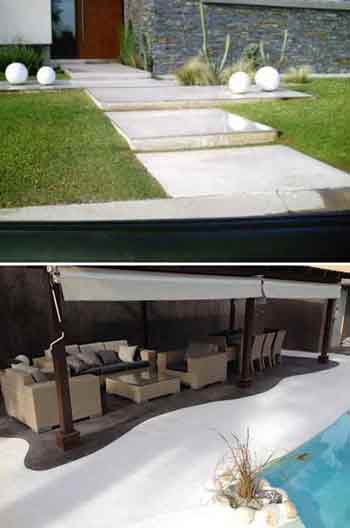 To take into account in the sealing phase:
To take into account in the sealing phase:
− The surface to be treated must be completely clean, dry and free of moisture.
− The temperature for the application of the seal must be between 10ºC and 30ºC, measured on the surface.
− The maximum humidity of the support must be 4%.
− The maximum relative humidity must be less than 80%.
− Lastly, if it is a floor, it should not be walked on for 8 to 14 hours after its application.
.
Other aspects of Microcement.
If you have come this far reading this article, you will have had more than one question. Here are some clarifications.
What is the difference between Microcement and Smooth Cement?
Microcement, as we have indicated previously, is a low-thickness cementitious coating (2 to 3 mm), which can be applied to existing surfaces. In addition, it does not need joints and can be placed both horizontally and vertically.
On the other hand, smooth cement is a material that has a thickness of 5 to 7 cm, which causes a significant increase in weight at the structural level. Also, you need contraction joints.
How to clean microcement?
Microcement maintenance is carried out by washing with water and neutral soap. Periodically it is recommended to apply self-gloss waxes diluted in water since, in this way, the protective layer of the floor is renewed.
For this maintenance it is not necessary to use any type of machinery, since all these products can be applied with a mop or mop.
In general terms, microcement must be cared for in a very similar way to that used with natural wood flooring.
Does microcement stain?
Microcement on floors cannot be stained if the sealing and waterproofing process has been applied correctly and, in addition, correct and periodic maintenance is carried out.
Does microcement crack over time?
Microcement does not crack over time, as long as the base where it was placed does not. Therefore, in case of doubt, it is advisable to put a fiberglass mesh in front to give it greater resistance to possible movements of the surface.
Is microcement repairable? What happens if it scratches?
Microcement can be repaired, in the case of superficial scratches, by sanding and waxing again.
In the event of a crack due to a movement of the walls or floors, its repair involves coating the entire panel again.



